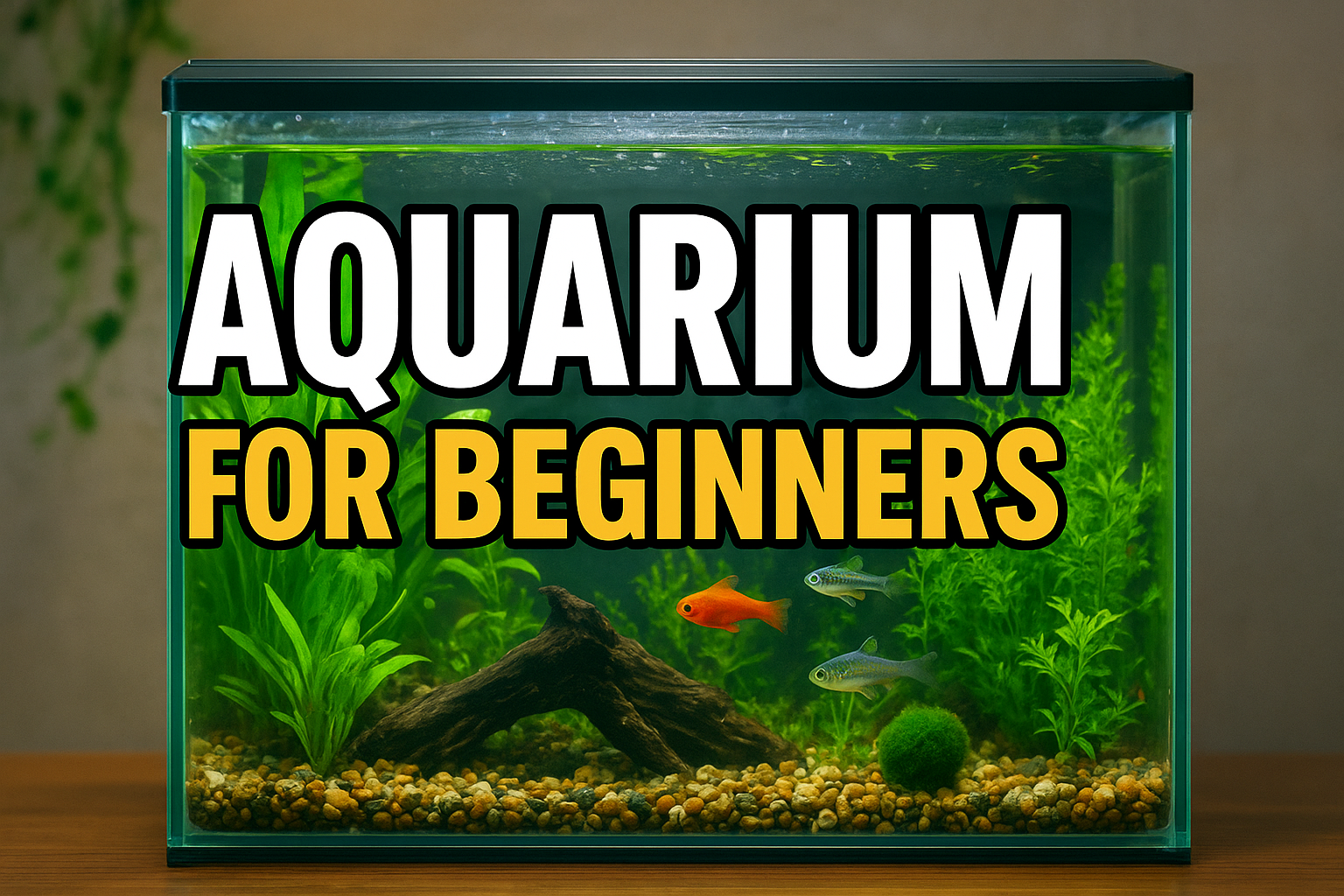Setting up an aquarium for beginners can be both exciting and overwhelming. Aquariums bring beauty, relaxation, and a connection to nature right into your home. However, many new fish keepers dive in without proper knowledge, leading to mistakes that harm fish and make the hobby frustrating. With the right guidance, you can avoid these pitfalls and create a thriving underwater world.
This comprehensive guide will walk you through every aspect of starting an aquarium as a beginner—from choosing the right tank size and equipment to selecting fish, maintaining water quality, and decorating your aquarium.
Why Choose an Aquarium as a Beginner?
Owning an aquarium offers more than just aesthetic appeal. It provides relaxation, stress relief, and even educational value. Studies have shown that watching fish swim reduces stress, lowers blood pressure, and promotes a sense of calmness. For families, an aquarium can be a fun way to teach children responsibility, biology, and the importance of caring for living creatures.
For beginners, aquariums are especially rewarding because:
- They’re customizable based on space and budget.
- They offer endless design possibilities.
- They connect you with nature indoors.
- They provide an ongoing, rewarding hobby.
Choosing the Right Aquarium Size for Beginners
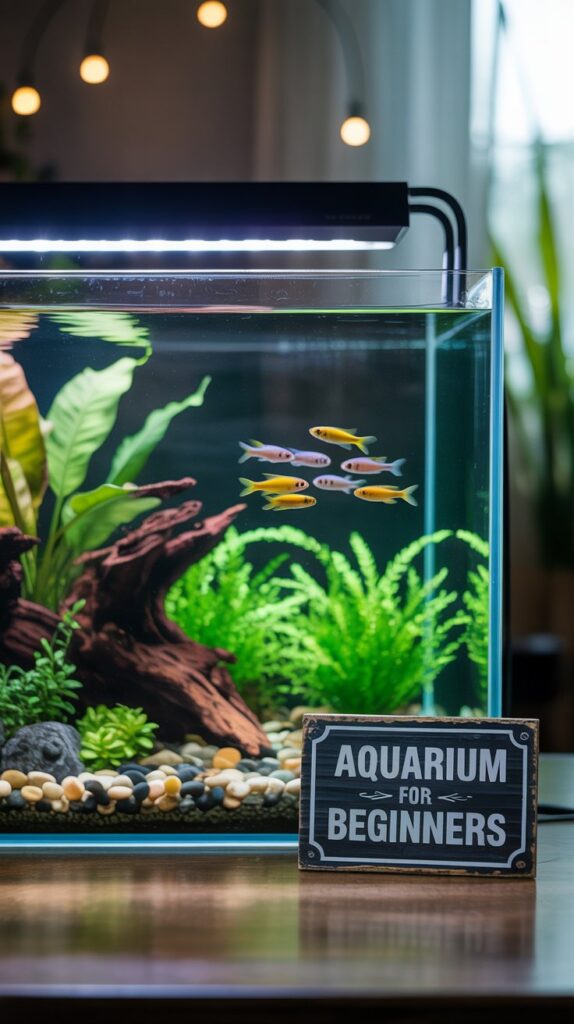
One of the most common beginner mistakes is starting with a tank that is too small. Smaller tanks may seem easier, but they are harder to maintain because water conditions fluctuate more rapidly.
Best Aquarium Sizes for Beginners:
- 10-20 gallons – Ideal for beginners; large enough to stabilize water parameters, yet small enough to manage.
- 30-40 gallons – Perfect for beginners who want to keep more fish or try aquascaping.
- 5-gallon tanks – Suitable only for a single betta fish or nano species. Not recommended for complete beginners.
Pro Tip: The larger the tank, the easier it is to maintain stable water conditions.
Essential Equipment for a Beginner Aquarium
When setting up an aquarium for beginners, having the right equipment ensures fish stay healthy and water remains balanced.
1. Aquarium Tank
Glass and acrylic are the two main options.
- Glass tanks are durable and scratch-resistant.
- Acrylic tanks are lighter but scratch more easily.
2. Filter
A filter is crucial for removing waste, uneaten food, and toxins like ammonia. Beginners should use:
- Hang-on-back filters (HOB) – Easy to use and maintain.
- Sponge filters – Perfect for small tanks and beginner-friendly.
- Canister filters – Better for larger aquariums.
3. Heater
Most tropical fish require water between 74–80°F (23–27°C). Choose a heater suitable for your tank size.
4. Lighting
Lighting is essential for plant growth and showcasing your fish. LED lights are energy-efficient and provide great illumination.
5. Substrate
Options include:
- Gravel – Easy to clean and beginner-friendly.
- Sand – Natural look but trickier to maintain.
- Aquarium soil – Best for planted aquariums.
6. Water Test Kit
Beginners must regularly test water for pH, ammonia, nitrites, and nitrates.
7. Other Essentials
- Fish net
- Aquarium thermometer
- Gravel vacuum
- Algae scraper
Cycling Your Aquarium: A Beginner’s Must
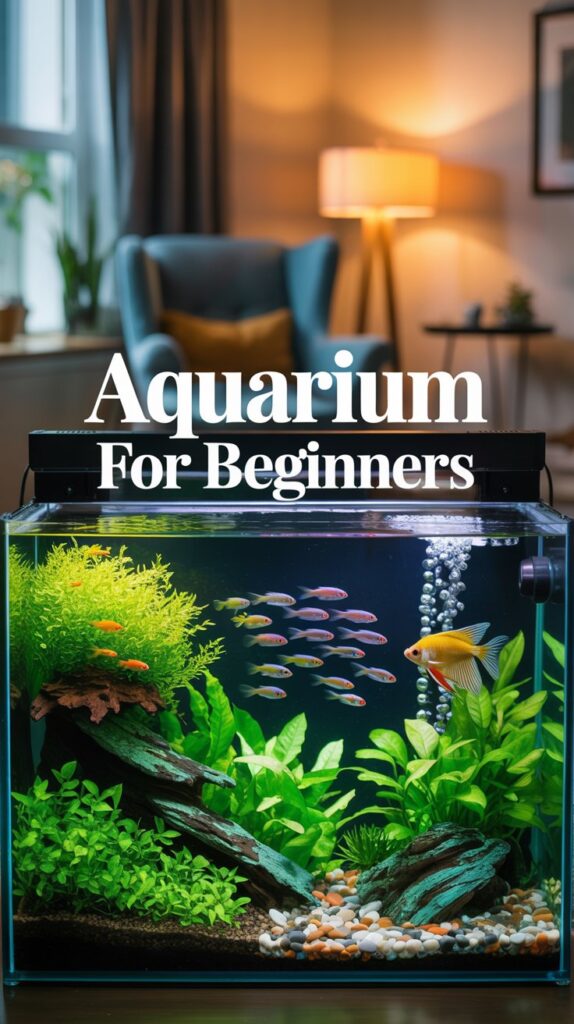
Before adding fish, beginners must understand aquarium cycling. Cycling establishes beneficial bacteria that break down harmful toxins (ammonia → nitrite → nitrate).
Steps to Cycle an Aquarium:
- Set up your tank with filter, heater, and substrate.
- Add water and start the filter.
- Introduce a source of ammonia (fish food, bottled ammonia, or hardy fish).
- Test water regularly for ammonia, nitrites, and nitrates.
- Wait 4–6 weeks until ammonia and nitrite reach 0 ppm while nitrates appear.
Tip: Never rush this process! Adding fish before cycling is complete can harm or kill them.
Best Fish for Beginners
Some fish species are hardy, adaptable, and perfect for beginners.
Top Beginner Fish Choices:
- Betta Fish – Vibrant colors, easy care, best kept alone.
- Guppies – Active, colorful, and easy to breed.
- Platies – Hardy and peaceful.
- Mollies – Adaptable to freshwater and brackish conditions.
- Neon Tetras – Schooling fish, best in groups of 6+.
- Zebra Danios – Active and hardy fish.
- Corydoras Catfish – Peaceful bottom dwellers that clean leftovers.
Fish to Avoid for Beginners:
- Goldfish (require large tanks and heavy filtration).
- Discus (sensitive and high maintenance).
- Oscars (grow very large and aggressive).
- Exotic saltwater fish (require advanced care).
Decorating Your Aquarium for Beginners
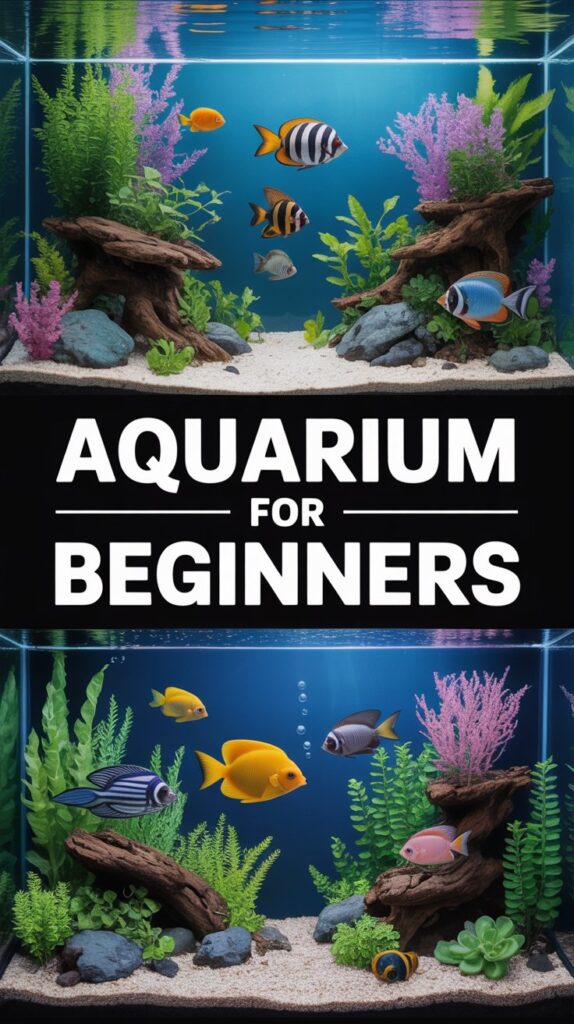
Aquarium decoration is not just for looks; it impacts fish behavior and stress levels.
Popular Decoration Ideas:
- Live Plants – Provide oxygen, absorb toxins, and look natural. Good beginner plants: Java fern, Anubias, Amazon sword, Hornwort.
- Artificial Plants – Low maintenance, but don’t provide biological benefits.
- Rocks and Driftwood – Create hiding spots and a natural look.
- Backgrounds – Enhance depth and beauty.
Tip: Always clean decorations before placing them in the tank. Avoid sharp edges that may injure fish.
Aquarium Maintenance for Beginners
A successful aquarium depends on regular maintenance.
Weekly Tasks:
- Check water temperature.
- Test pH, ammonia, nitrites, and nitrates.
- Remove uneaten food.
- Clean algae from glass.
Bi-Weekly Tasks:
- Perform a 20–30% water change.
- Vacuum substrate to remove waste.
- Rinse filter media (in old tank water, not tap water).
Monthly Tasks:
- Inspect equipment.
- Trim plants.
- Deep clean decorations if needed.
Consistency is key to preventing problems like cloudy water, algae overgrowth, or fish illnesses.
Common Mistakes Beginners Should Avoid
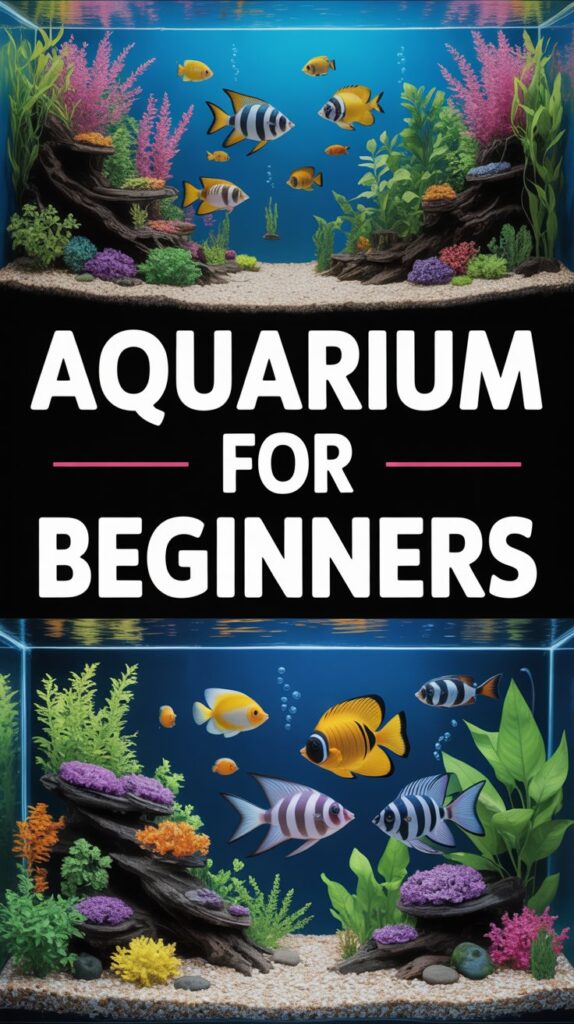
- Overstocking the tank – Too many fish = poor water quality.
- Overfeeding – Causes waste buildup and pollution.
- Skipping the nitrogen cycle – Leads to fish deaths.
- Not testing water regularly – Leads to unnoticed problems.
- Choosing incompatible fish – Aggression and stress may occur.
- Neglecting maintenance – Dirty water harms fish.
Benefits of Owning an Aquarium
- Reduces stress and anxiety.
- Adds beauty and movement to your space.
- Provides educational value for kids.
- Encourages responsibility and routine.
- Offers a sense of achievement when your fish thrive.
Final Thoughts on Aquarium for Beginners
Starting an aquarium for beginners may seem intimidating, but with the right approach, it’s a rewarding hobby that brings joy and relaxation. Choose the right tank size, cycle it properly, pick beginner-friendly fish, and maintain the aquarium regularly. Over time, you’ll gain confidence and may even advance to more complex setups like planted or saltwater tanks.
Remember: Patience and consistency are the keys to success in fishkeeping.
FAQs About Aquarium for Beginners
Q1: What is the easiest aquarium fish for beginners?
Betta fish, guppies, platies, and mollies are among the easiest and most beginner-friendly fish.
Q2: How often should I clean a beginner aquarium?
Perform partial water changes every 1–2 weeks and clean algae weekly.
Q3: Do I need a filter for a beginner aquarium?
Yes, filters are essential for removing waste and keeping water stable.
Q4: Can I put tap water directly into my aquarium?
No. Tap water must be treated with a water conditioner to remove chlorine and harmful chemicals.
Q5: How many fish can I keep in my first aquarium?
Follow the rule of thumb: 1 inch of fish per gallon of water, but always research fish compatibility.
Q6: Is a 10-gallon tank good for beginners?
Yes, a 10–20 gallon tank is ideal for beginners, providing enough space and stability.
Q7: How long does it take to set up an aquarium?
The setup itself takes a few hours, but cycling the tank properly takes 4–6 weeks before adding fish.

